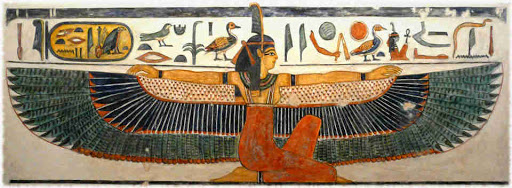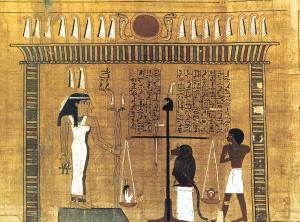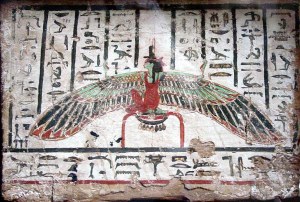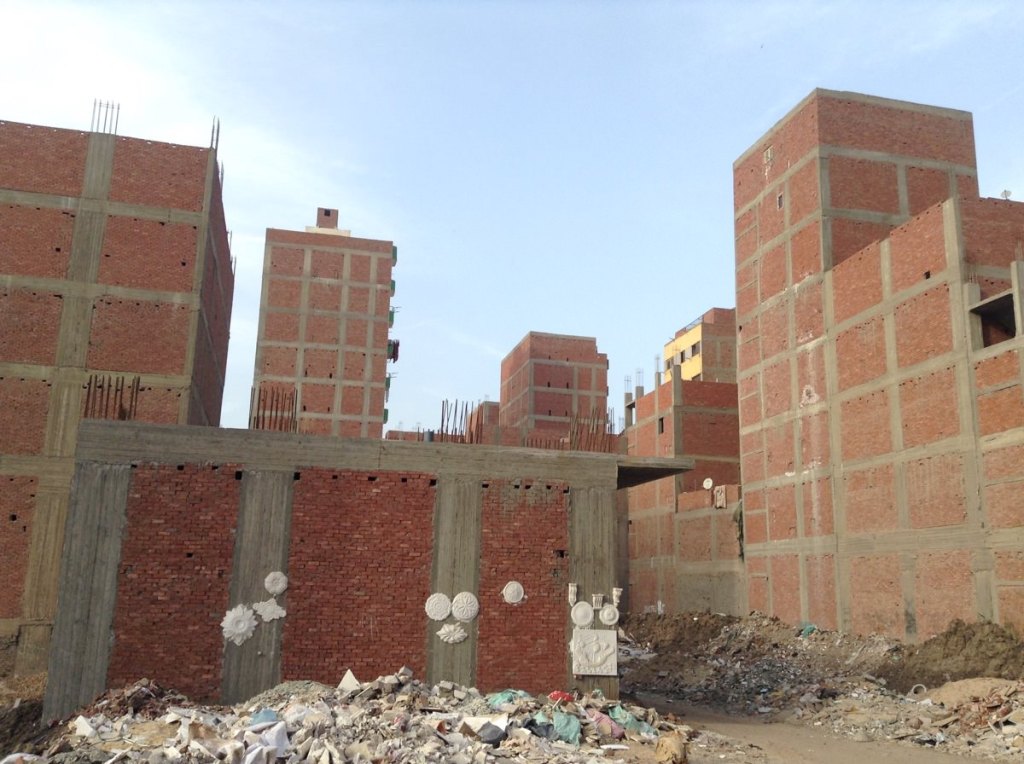
Egypt is a land of bricks. From the ancient sun-dried mudbrick temple enclosures to modern Egyptian apartments, everything was and is made of bricks. (And, modernly, supplemented by concrete.)
It’s because there never were many trees and the native ones aren’t very suitable for large building projects. Even anciently, building wood was imported.
So bricks were and are still the answer. the ancient Egyptians encountered bricks on the way into life, during life, and on the way out of life.
The ones they encountered on the way into and out of life were special. There were magical.
On the way into life, there were four bricks, stacked in pairs, that served to elevate a birthing mother so that when her child emerged beneath her, the baby could easily be caught in the hands of the midwife. (According to midwives even today, a squatting or sitting posture is preferable to the supine position in which most modern Western women give birth, generally resulting in a faster, easier delivery.)
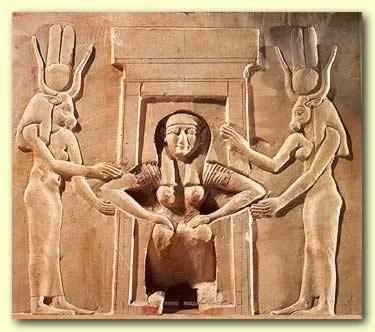
On the way out of life, there were the four talismanic bricks that were placed in niches in the four sides of a burial chamber. These bricks were decorated with amuletic figures: in the east, the Anubis jackel; in the south, a flame; in the west, the djed pillar of Osiris; and in the north, a mummiform male figure. All of them protected the deceased.
Doubtless, the talismanic bricks that surrounded the body of the deceased in the tomb were meant to assist in rebirth into the next life, just as the birthing bricks assisted in a child’s birth into physical life.
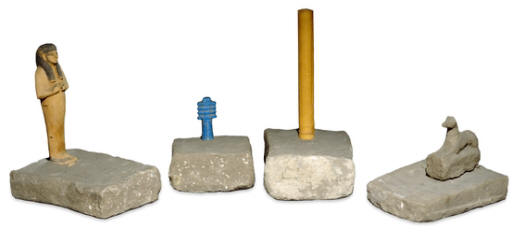
The Goddess most closely associated with the birthing bricks is Meskhenet, Protectress of the Birthing Place. The bricks were called meskhenut (pl.) after Her. Meskhenet is depicted either as a woman-headed birthing brick or as a woman with a distinctive curling headdress that has been identified as a stylized cow’s uterus. She protects mother and child during the dangerous process of birth, She foretells the child’s destiny as the baby is born, and She is among the Deities of rebirth Who witness the judgment of the deceased in the Otherworld.
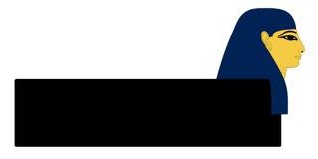
With Isis’ own connection to both birth and rebirth, you will probably not be surprised to learn that Isis is closely associated with Meskhenet. At Osiris’ temple complex at Abydos, four Meskhenets serve as assistants to Isis in the great work of rebirth done there. At Hathor’s temple complex at Denderah, a combined form of Isis and Meskhenet (Meskhenet Noferet Iset or Meskhenet the Beautiful Isis) is one of the four Birth Goddesses of Denderah. And in the famous story of the birth of three kings found in the Westcar papyrus, both Isis and Meskhenet are among the four Goddesses Who assist in the kings’ births.
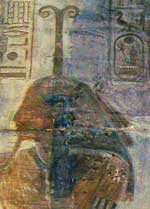
Both tomb bricks and birthing bricks were protective. In an inscription from the temple at Esna, Khnum, the God Who forms the child’s body and ka on His Divine potter’s wheel, places four Meskhenet Goddesses around each of His various forms “to repel the designs of evil by incantations.” As Birth Goddess, Meskhenet is associated with the ka as well. A papyrus in Berlin invokes Her to “make ka for this child, which is in the womb of this woman!”
We have a few surviving spells that were used to charge the birthing bricks. They were used to repel the attacks of enemies to the north and south of Egypt and may indicate that the birthing bricks, like the tomb bricks, were connected with the directions.
And here’s another tidbit showing parallels between the magical tomb bricks and birthing bricks. In an Egypt Exploration Society article by Ann Macy Roth and Catherine H. Roehrig, the authors point out an interesting gender-reversed aspect of these magical bricks.
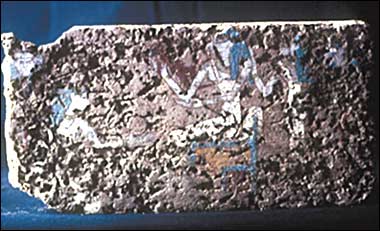
You may recall that four Sons of Horus are the Gods Who protect the four canopic jars that contain the internal organs of the mummy. These four Gods are, in turn, guarded by four Goddesses. In Tutankhamun’s tomb, the Goddesses are Isis, Nephthys, Selket, and Neith. Roth and Roehrig suggest that we may be able to explain the amuletic figures associated with the tomb bricks in a similar, though opposite, manner. If the four meskhenets are personified as four Goddesses Who protect the birthing place, perhaps the four figures on the tomb bricks—the God Anubis, a mummiform male, a Divine pillar associated with Osiris, and a flame, the hieroglyph for which is rather phallic—may be considered Divine Masculine Powers Who protect the four Meskhenet Goddesses, just as four Goddesses protect the four Sons of Horus.
It is worth noting that these magical bricks were made in the same way as were the traditional mudbricks of Egypt. They were fashioned from the fertile Nile clay and sand, mixed with straw, which may be associated with Isis as Lady of the Fertile Earth, then they were dried in the brilliant heat of Isis-Re, the Radiant Sun Goddess. And, of course, as a Divine Mother Herself, Isis is connected with every aspect of human and animal fertility, from conception to birth, as well as the protection of the children as they grow.
As we have a south-to-north flowing river here in Portland, I might see if I can get some Portland “Nile” mud to create four miniature mudbricks. Then I could magically charge them by naming them “Meskhenet Noferet Iset” and placing them in the four quarters of the temple—or even outside, one on each side of the house. They might provide some very fine magical protection.





